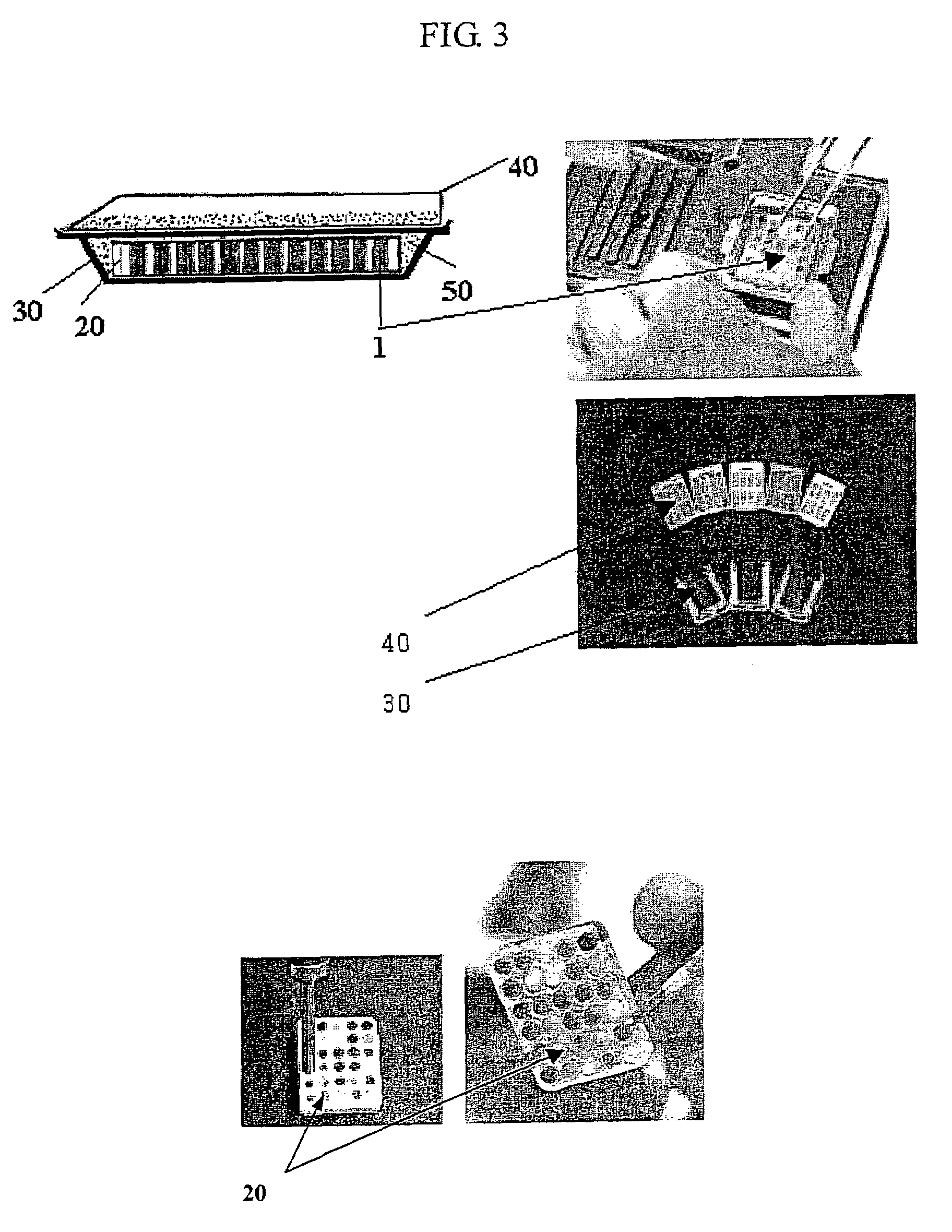Recipient block and method for preparation thereof
a technology of recipient block and reagent block, which is applied in the field of recipient block, can solve the problems of high cost of tissue sample analysis, time-consuming, lack of consistency and reliability,
- Summary
- Abstract
- Description
- Claims
- Application Information
AI Technical Summary
Benefits of technology
Problems solved by technology
Method used
Image
Examples
examples
[0037]1. Preparation of a Recipient Block
[0038]100 ml of distilled water and 4 g of agarose were added to a beaker, and the beaker was heated to melt the agarose. The molten agarose was poured into a mold, and slowly cooled to room temperature for its gelation. After being detached from the mold, the agarose gel was dehydrated by being immersed in a 70% alcohol solution for 2 hrs, an 80% alcohol solution for 2 hrs, a 90% alcohol solution for 2 hrs, and then a 100% alcohol solution for 2 hrs. The dehydrated agarose gel was immersed in xylene for 6 hrs to make the gel clear, and penetrated with paraffin for 5 hrs, to provide a block.
[0039]The resulting block was cut into a size suitable for its fitting into the inner space of a base mold 30. Then, the block was punched with a puncher having punching needles with the same inner diameter as a through hole of a punching tip of a tissue puncher. The puncher was removed from the block to completely form cylindrical holes in the block. Agar...
PUM
| Property | Measurement | Unit |
|---|---|---|
| size | aaaaa | aaaaa |
| temperature | aaaaa | aaaaa |
| temperature | aaaaa | aaaaa |
Abstract
Description
Claims
Application Information
 Login to View More
Login to View More - R&D
- Intellectual Property
- Life Sciences
- Materials
- Tech Scout
- Unparalleled Data Quality
- Higher Quality Content
- 60% Fewer Hallucinations
Browse by: Latest US Patents, China's latest patents, Technical Efficacy Thesaurus, Application Domain, Technology Topic, Popular Technical Reports.
© 2025 PatSnap. All rights reserved.Legal|Privacy policy|Modern Slavery Act Transparency Statement|Sitemap|About US| Contact US: help@patsnap.com



